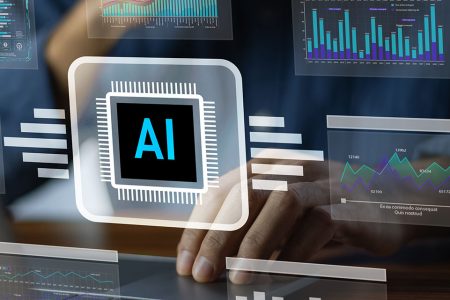At this point, you’ve no doubt heard of or tried artificial intelligence (AI) that can compose emails, write articles, or generate code. It’s impressive, sure. But it’s only one piece of the puzzle. The real world isn’t just text on a screen, it’s a rich blend of sights, sounds, and sensory information. So, what if AI could understand our world more like we do?
The next wave of AI is learning to do just that. It’s making a fundamental leap from understanding the world through a single lens – like only processing text – to perceiving it through multiple channels at once: sight, sound, and language combined.
What’s emerging has the potential to dramatically change how we work, create, and interact with technology. This multi-modal development is opening new possibilities – like tools that can analyse a photo while chatting about it, or systems that create content across formats all at once.
AI is still finding its feet in this space, with a lot of the capabilities still being figured out. But the progress we’re seeing now is laying the groundwork for tools and applications that would’ve felt like science fiction not too long ago.
The starting point: AI with a single sense
Until recently, most AI models were single-modal, basically like AI having only one sense.
- Some models could only work with text, making them ideal for writing emails or translating languages.
- Others handled only images and were best at identifying objects in photos.
- And some processed only audio, like the early systems designed to transcribe speech.
While powerful, these models have a pretty major limitation: they can’t connect the dots between different types of information. They might understand the word dog, but they couldn’t connect it to a picture of a dog or the sound of a dog barking.
That said, don’t underestimate single-modal AI as, for the right task, it can be exactly what you need. By focusing on just one type of data (like text), these models can reach impressive levels depth and sophistication.
For a real-world look at how a powerful text-only model can be harnessed to create effective business solutions, read our related case study.
The evolution: giving AI multiple senses
To make AI more helpful and intuitive, researchers realised it needed to understand the world in all its variety. That’s where multi-modal AI comes in.
A multi-modal model is a more advanced kind of AI that can make sense of different types of information at the same time, like text, images, audio, and video. It learns to connect these inputs in a more holistic way. For example, it understands that the word dog, a photo of a furry companion, and the sound of a bark are all connected to the same concept.
By combining these “senses”, multi-modal AI have a much deeper and more nuanced understanding of the world. The result is an AI that can interact with us in more natural and powerful ways.
How multi-modal AI is changing our reality
This isn’t just a futuristic concept; multi-modal models are already being used in the real world to solve difficult problems:
Healthcare: AI can read a doctor’s typed notes, look at an X-ray, and listen to a patient describe their symptoms to help give a more accurate diagnosis.
Vehicles: Autonomous driving systems rely on multi-modal AI to process visuals from cameras, sound from the environment, and sensor data – all to navigate roads safely.
Home: The latest virtual assistants are multi-modal too. They don’t just respond to your voice, they can also “see” through a camera, ultimately making interactions more smooth. Whether it’s identifying a plant or fixing a leaky tap, AI is more capable than ever before.
Current models (at time of writing) such as OpenAI’s GPT-4o and Google’s Gemini, can already understand and respond to a mix of text, audio, and images at the same time. This unlocks amazing new capabilities, like solving a math problem just by looking at a photo or having a real-time conversation about what’s happening in a live video.
The benefits of a multi-sensed AI
So, why does all this matter? Mostly because an AI that can see, hear, and read has some pretty incredible advantages:
- Deeper understanding: It can grasp the full context of a situation, leading to more accurate and relevant responses.
- Better decision-making: By pulling from multiple data sources, it can arguably make more informed and “reliable” judgments.
- More versatility: It can navigate complicated, data-rich environments and take on tasks that were once impossible for AI.
The future is multi-modal
From smart homes that predict your needs through cameras, microphones and sensors, to healthcare apps that provide life-saving predictions, multi-modal learning is the next huge thing in AI. It’s creating a future where technology understands us better and interacts with us more “naturally”.
This is arguably one of the most exciting frontiers in tech today, and it’s only just getting started. Understanding the shift from single to multi-modal AI is essential for anyone curious about where the digital realm is headed.
Want to see a real-world example? Read our related blog post to see how we developed a multi-modal chatbot that uses both text and voice to help people struggling with atrial fibrillation.
If you want to implement something similar in your business, feel free to reach out to us!
Let's collaborate
Partner with us
Let’s work together to create smarter, more effective solutions for your business.
Related blogs
Who we are
Explore how our culture and expertise fuel digital innovation
Join us







